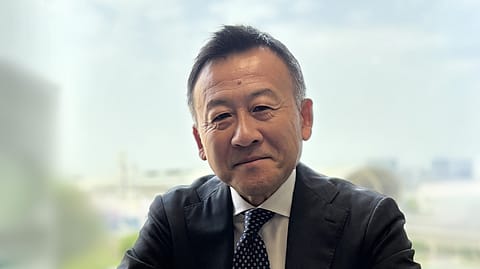PLI push, Make in India, and sustainability to drive Mitsubishi Electric’s future: MD Atsushi Takase
As policy reforms like GST cuts and PLI boost local manufacturing, the Japanese major is deepening its India play — from factories to Industry 4.0 and sustainable tech.

While global geopolitical uncertainties create short-term challenges, they also reinforce India’s attractiveness as a manufacturing base, said Atsushi Takase, managing director of Mitsubishi Electric India (MEI). As the Indian subsidiary of Japanese major Mitsubishi Electric Corporation completes 15 years in India, Takase believes the next phase of growth in India will be driven by three powerful trends of expanding local manufacturing under Make in India, advancing semiconductor and digital transformation initiatives, and leading the country’s transition towards sustainability and energy efficiency.
“The next 15 years will be about enabling India to emerge as a global hub for innovation, smart manufacturing, and sustainability—and Mitsubishi Electric India will be proud to help define that future,” said Takase. The recent policy tailwinds add to this optimism. The Production-Linked Incentive (PLI) scheme, Takase noted, offers “a strong framework to expand local manufacturing,” while GST rate cuts on air conditioners and industrial components “will stimulate demand and make energy-efficient technologies more accessible.”
MEI reported ₹3,700 crore in revenue for FY24, registering a 21% year-on-year growth, while profit rose 94%. With an authorised and paid-up capital of ₹699 crore and a workforce of 621 employees, the company has strengthened its India presence through key investments, including a Factory Automation Systems facility in Pune and an upcoming air conditioner and compressor plant in Chennai. These facilities are part of MEI’s long-term strategy to enhance local manufacturing and R&D capabilities in line with India’s Make in India and sustainability goals.
In India, MEI competes with Siemens, ABB, and Schneider Electric in factory automation and with Daikin, LG, Voltas, Blue Star, and Hitachi in air conditioning and building systems. Its major clients include leading names in automotive, infrastructure, and energy sectors, such as Indian Railways, metro projects, and renewable energy developers. Through solutions like e-F@ctory, MELSOFT MaiLab, and MELSOFT Gemini, MEI is enabling Indian manufacturers to adopt smart manufacturing and digital factory technologies.
Semiconductors will be crucial as India builds its electronics and mobility ecosystem, Takase added.
Citing the Pune and Chennai facilities, Takase said these reflected MEI’s commitment to Make in India. “It’s a natural evolution—from building expertise through people to channelling that into manufacturing excellence that supports India’s self-reliance.”
While the factory automation and industrial division continues to anchor MEI revenues, Takase expects the life segment (air conditioning, elevators, and escalators) and semiconductors and devices to be major growth drivers in the future. “With rising urbanisation and demand for energy-efficient products, our life segment will see strong momentum,” he said.
The company is also equally focussed on sustainability. MEI’s Talegaon facility in Pune follows eco-friendly manufacturing practices, while the upcoming Chennai plant is designed to enhance local sourcing and reduce emissions, Takase said. “It’s about contributing to India’s larger goals of energy efficiency and environmental stewardship.”
At the same time, keeping pace with rapid technological change while ensuring that innovations are relevant to India’s diverse industrial landscape is challenging, he said. “We must also continue investing in talent and skill development to build a workforce ready for advanced digital and manufacturing systems. Finally, optimising supply chains to make them more efficient and sustainable will remain a key priority as we expand our local production footprint.”